Buckwheat is a flowering plant that belongs to the knotweed family, and which is now very popular in vegan, gluten-free cuisine.
Sprouted buckwheat in particular is quite valuable for the vegan diet. In this article we’ll explain its advantages and a variety of options for preparation.
Why is Buckwheat So Healthy?
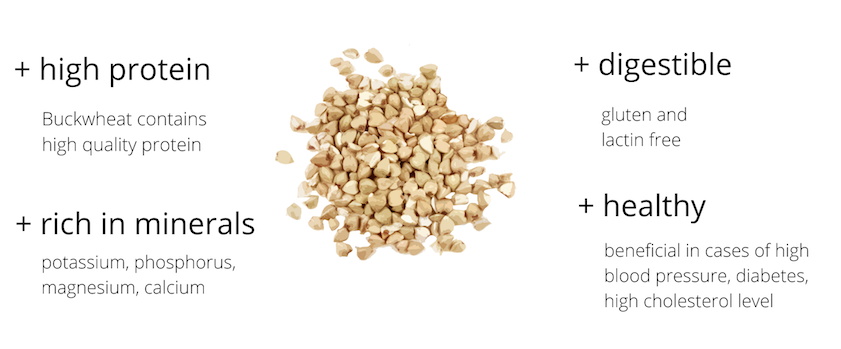
Buckwheat is Both Gluten-Free and Lectin-Free
Buckwheat has the advantage over wheat of being both gluten- and lectin-free.
The gluten content in wheat has steadily increased over the years as new varieties have been bred. Consuming too much gluten often triggers autoimmune diseases, intolerances, and chronic inflammation of the intestinal mucosa in the body, which can be manifested by symptoms like lethargy, as well as stomach and intestinal problems.
Lectins are proteins that can bind to our red blood cells in the blood and to the walls of our intestines, thus increasing circulatory disorders and heart disease, as well as negatively affecting the intestines.
Buckwheat Contains High Quality Protein
Buckwheat contains protein of high biological value:
- Buckwheat provides all eight essential amino acids in a beneficial amino acid ratio./li>
- Buckwheat contains almost 3 times as much lysine and tryptophan as real cereals, and also a lot of lecithin. Lysine is an important building block for muscles, bones, and connective tissue. Tryptophan is mood-boosting, and lecithin has a beneficial effect on fat metabolism and the liver, among other things.
Buckwheat is Rich in Minerals and Vitamins
100 grams of buckwheat provide:
- 460 mg potassium
- 254 mg phosphorus
- 231 mg magnesium
- 18 mg calcium
- 2.2 mg iron
Additionally, buckwheat contains B vitamins and vitamin E, and is rich in rutin. Rutin is a bioflavonoid that mainly supports the strengthening of blood vessels, and thereby the cardiovascular system.
Buckwheat is Beneficial for
- High blood pressure: In particular the flavonoid rutin in buckwheat protects the blood vessels and can lower blood pressure.
- Diabetes: The ingredients of buckwheat can lower blood sugar levels.
- High cholesterol: If the harmful LDL blood fat is too high, then the dietary fiber and flavonoids in buckwheat can lower cholesterol levels.
- Liver levels that are too high: Lecithin from buckwheat protects the liver cells, which in turn supports the function of the organ.
- Gluten intolerance, since buckwheat is gluten-free.
Note:
You may have heard that the fagopyrin found in buckwheat seed coats can cause the skin to be more sensitive to sunlight if eaten in large amounts.
As a rule, this doesn’t really affect us. And here’s why: for the purpose of cooking, and germinating or growing sprouts, we use hulled buckwheat! The unhulled buckwheat is used for growing greens, and in this case we would only eat the cotyledons.
Are you interested in gaining a comprehensive understanding of the health benefits of a plant-based diet? Download the curriculum for our Holistic Nutrition Coach training program.
The Special Advantages of Sprouted Buckwheat
Through the germination process (1)
- The vital substances burst forth
- The enzymes awaken
- The seeds become more alkaline
- The proteins become easier to digest
Buckwheat Germinates Quickly and Easily
Here’s how:
Soak buckwheat in water for about 1 hour.

Then rinse thoroughly in a sieve (buckwheat slimes a bit), drain the water and let it rest in the sieve at room temperature.
Alternatively, you can make smaller quantities in a sprout jar.
Rinse again in the evening.
On the second morning, they should already have formed small tails.

Now the buckwheat sprouts can be used. Rinse thoroughly again before eating, leftovers can be stored in the refrigerator or dried in a dehydrator.
Note:
Buckwheat begins to taste more bitter after the third day. Additionally, buckwheat sprouts should not be allowed to germinate into greens, as fagopyrin is produced in the cotyledons. Fagopyrin has a phototoxic effect when consumed in larger amounts, which means that rashes form on the skin when exposed to sunlight.
Sprouted Buckwheat Deliciously Prepared
Fresh buckwheat sprouts can be sprinkled over mueslis, salads, soups, or vegetable dishes, and further processed into delicious crunchies, fritters, or breads.
Sprouted buckwheat becomes especially crispy and crunchy when dried in a dehydrator or, as shown in the following picture, outside during the summer. These crunchies taste wonderful in muesli, salads, or by themselves as an alkaline snack.
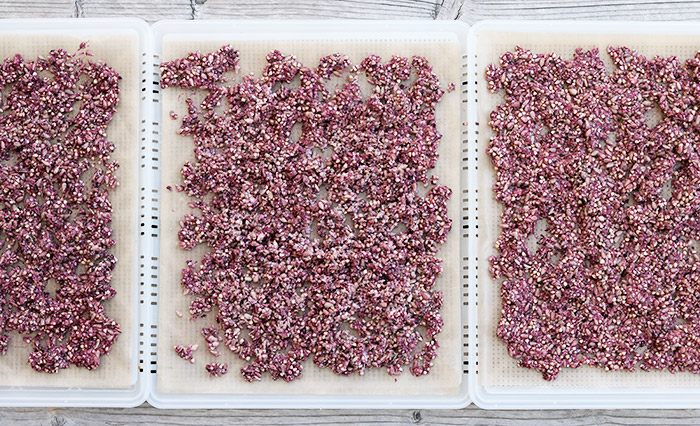
Sprouted buckwheat can be processed very well to raw food bread, fritters, or delicious crunchies, both sweet and salty.
>> click on the picture to get to the recipe!
Raw breads, patties, and crunchies fill you up for a long time and are all delicious alternatives for anyone who might miss conventional bread.
These crunchy sprouts are the crowning glory in salads, soups, vegetable dishes, or by themselves as a snack.
Have fun discovering your buckwheat recipe creations!
Would you like to join our unique, based on nutritional sciences and practice-oriented training program for gaining a high level of health?
We are more than happy to inform you about our training program on our website!



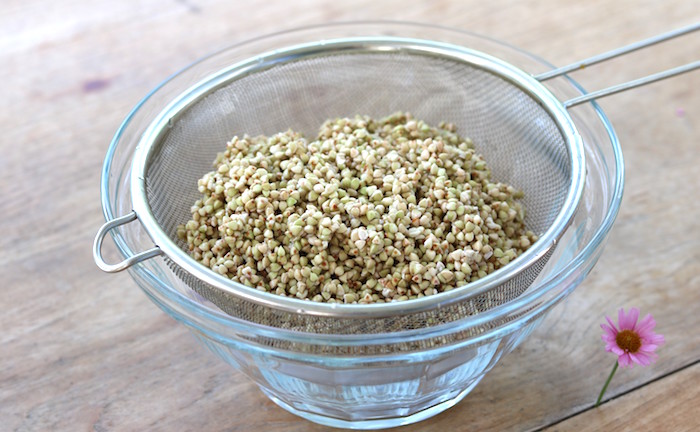
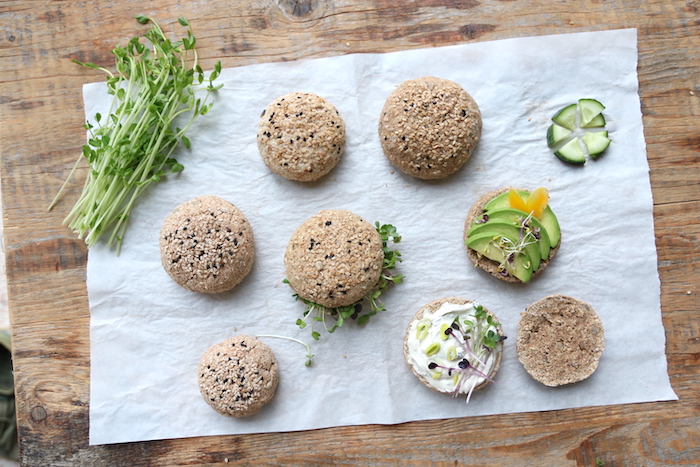
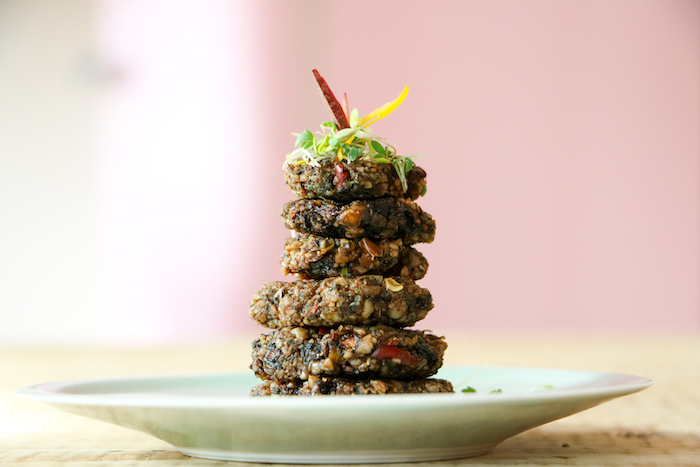
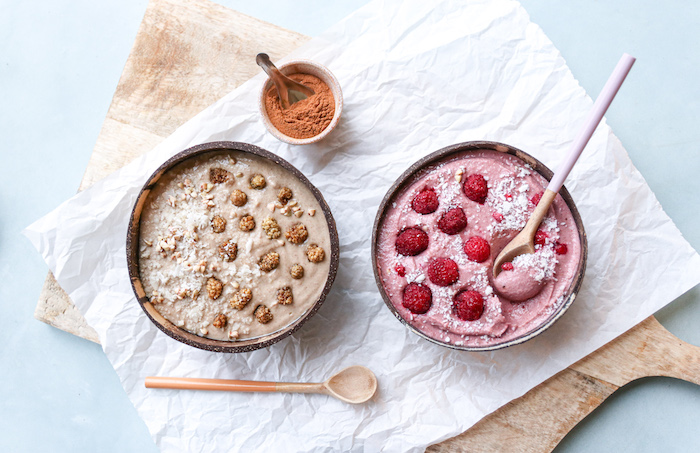
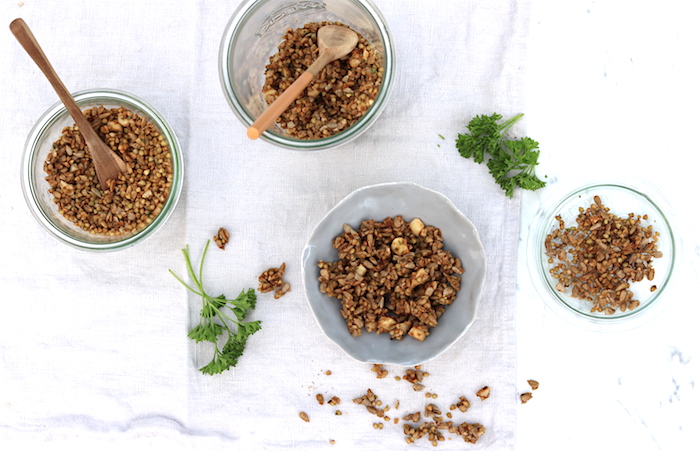


thanks! how many calories are in 100 grams of spourted boiled green buckwheat?
Hi Arik,
Sprouted and boiled buckwheat provides around 120 calories per 100 grams.
Enjoy it, Ulrike 🌱🌿💚